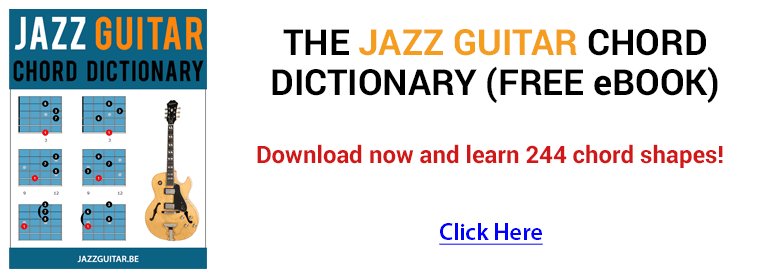-
Hello! what do you use for transcription? the most obvious solution is to use PC or smartphone software.
Are there any alternatives (besides the old way of slowing down the vinyl record)? The fact is that I would like to do transcriptions without using devices with screens - they hurt my eyes and head
-
12-25-2020 10:16 AM
-
Close your eyes and use your ears.
 Originally Posted by Kmatuhin
Originally Posted by Kmatuhin
-
 Originally Posted by pcjazz
Originally Posted by pcjazz
 Well, someone had to say it, sooner than later!
Well, someone had to say it, sooner than later!
-
Transcribe! Best tool on windows... The computer will help you do it faster and better. It doesn't bite.
-
+1
 Originally Posted by guido5
Originally Posted by guido5
Transcribe!
-
I really like the “Amazing Slow Downer” app for iPhone/iPad. Nice features and the touch interface keeps me from having to use a computer keyboard with a guitar in my lap.
!Slow down and transcribe with Roni Music software - slow down the speed of music without changing the pitch
-
If you need to slow things down, the easiest is youtube videos, go on video settings and play them on 0,7 or 0,5 speed. You can go even lower although the sounds starts to suffer.
Also the site soundslice.com is great. Somebody put one of my videos there, check out how it works! It creates the notes and tab by itself, you just paste in the youtube link. Its pretty accurate for the notes too i think. I found it really impressive as a transcription tool..
Cherokee - 1Ch - Apostolos Leventopoulos | Soundslice
Of course half the work is using your ears, but notes do help in remembering.
-
why slow things down?
instead listen for 100 times
-
thanks for answers! but I thought that maybe someone uses some portable players with AB repeat function, or guitar processors ... something like this
-
If you want to go that way: I have a TASCAM GT 1 "guitar trainer" (I think they are still around in an updated version). Contains a CD player and a guitar input and you can play along with the CD. You can slow down the audio (without changing pitch) and you can loop sections as well.
 Originally Posted by Kmatuhin
Originally Posted by Kmatuhin
-
you can also mod a tapedeck or even a walkman. speech recorders often have variable speed. but there is a reason most use a computer and "transcribe!" or similar.
btw you can use a foot switch for "transcribe!" which is super helpful.
pro tip: even an old game controller can be used as a foot switch
-
You get better jazz feel out of analog equipment obviously.
Learning by mp3 literally turns you into a Snarky Vulfpecker and no one needs any more of that splattered all over their instagrams like processed cheddar
O shit I’m breaking out into a rash of Jacob Colliers harmonising my every utterance in stacked parallel neutral thirds while Adam Neely reads extracts from his latest treatise on the gender politics of quartal chords.
it will be nice to go outside.
can I go outside soon please?
-
Not before you have cleaned up your room!
 Originally Posted by christianm77
Originally Posted by christianm77
-
Before the internet was a thing I used one of these Akai reel-to-reel tape decks and played things back at half speed.
-
Like probably every self taught guitarist in the 1970s I used the “needle drop” method to learn songs, guitar parts, and solos. I remember at some point lusting over these ads in the back of music magazines for multi-speed tape decks - I think you could mail order them from Jamey Aebersold, but they were ridiculous expensive.
My big advance was buying a component cassette deck that let you set start and end points on the counter and “loop” a section of tape. I’d record a tune from LP to cassette and then get to work.
Sometimes I think maybe not being able to slow down a track actually worked to my advantage in the end. Originally Posted by grahambop
Originally Posted by grahambop
-
We issued these to rhythm section students at a school I where I taught, mostly for learning songs but for transcribing solos too. Works great, does the slow downer thing and easily fits in a gig bag.
GB-10 | OVERVIEW | TASCAM - United States
-
I used to record hard to decipher sections ten times from LP to tape so I wouldn't have to rewind all the time...
 Originally Posted by BickertRules
Originally Posted by BickertRules
That's the new current version of mine. Originally Posted by BickertRules
Originally Posted by BickertRules
-
What a cool, little device. I use Transcribe! software and my laptop, but I love the portable nature of this device. I would think you can loop certain sections and play them over and over, the way Transcribe does.
 Originally Posted by BickertRules
Originally Posted by BickertRules
I might have to put this on my wishlist one day. Thanks.
-
youtube and amazing slow downer. I like the latter because I can loop small sections at slow speed.
I bought ASD before I ever heard of Transcribe. Transcribe may be better.
-
I don't understand the notation aspect of Soundslice. I put a youtube video on it, and it recorded it. Then how does the notation part work?
 Originally Posted by Alter
Originally Posted by Alter
Do you use their staff to transcribe it? Does someone else transcribe it? Does the program transcribe it?
Who transcribed what you played on Cherokee?
-
a fan, i guess?
 Originally Posted by sgcim
Originally Posted by sgcim
-
the idea that a website would auto-transcribe whatever you upload sounded too good to be true... and it is:
 Originally Posted by sgcim
Originally Posted by sgcim
Creating and editing content on Soundslice | Soundslice help | Soundslice
This page from the soundslice help indicates that you can upload a file from your favorite notation program or you can use the online transcription editor at the soundslice site to create the notation there.
Actually, auto-transcription isn't REALLY too good to be true. There are sequencer programs and DAWs that allow you to generate notation from midi or from captured audio, but you'll put some amount of effort into cleaning up the raw output. If the input is pretty simple, and played in really strict, straight time, you'll clean up less. If the input is complex, fast, swung, changes keys/meter, or is polytonal, you'll clean it up more.
And, yeah, Transcribe! is a great app, especially for its modest price. If money is no object, you can probably get a bit more out of Final Cut Pro with a burly processor... that's probably how Troy Grady does the really nice slowed-down clips on his site.
-
I was under the impression that the program creates the chart. Could it be the person that did the video actually did the transcribing? He doesn't mention so. There are dedicated programs that can do transcription, if the source is clear enough. Even playing to a daw with some quantizing does it.
 Originally Posted by sgcim
Originally Posted by sgcim
-
I use either an audio program like Apple Music or Spotify or (if the music ist available) Youtube (just recently discovered that I can slow down ;-) and type in Musescore. Works for me, but I think I'll lokk into soundslice as it seems to integrate all the functions of what I'm using.
-
I use a Boss eBand JS-10. I bought it maybe eight years ago primarily to play with backing tracks and to record. Its remarkably good at both. It has the full Boss COSM amp modeling system, but I admit I use very little of all that (same story with my Roland Cube ...). But I have dialed good tones for the 175 and 335.
I move the songs in direct via PC or thumb drive, then place the A/B (start/stop) on the sections I am transcribing. Slow down to 50% of normal speed. I use pencil and paper to transcribe notes to sheet music. I use the center cancel to knock out the solo (this feature is far from perfect), or I record my own rhythm track - then gradually increase the tempo while I am getting the feel of playing the lines over the tune.
I am collaborating with a buddy to record Softly and after a bit of searching I landed on Barney Kessel’s cover. I transcribed his approach to the melody and I took some pieces from his three chorus solo to build one of my own.
It was a great learning experience for me (as transcription always is). The eBand plays a big role in the process and if it died today, I would replace it in a heartbeat.Last edited by Bflat233; 12-27-2020 at 06:36 PM.




 Reply With Quote
Reply With Quote







2 new & excellent Jazz Comping Truefire...
Yesterday, 10:22 PM in Comping, Chords & Chord Progressions